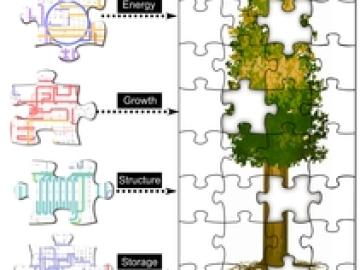
Filter News
Area of Research
- Advanced Manufacturing (6)
- Biological Systems (6)
- Biology and Environment (4)
- Building Technologies (1)
- Clean Energy (72)
- Climate and Environmental Systems (3)
- Computational Biology (2)
- Computational Engineering (1)
- Computer Science (9)
- Energy Sciences (3)
- Fusion Energy (6)
- Materials (62)
- National Security (5)
- Neutron Science (25)
- Nuclear Science and Technology (11)
- Quantum information Science (3)
- Supercomputing (41)
- Transportation Systems (3)
News Type
Date
News Topics
- 3-D Printing/Advanced Manufacturing (15)
- Advanced Reactors (7)
- Artificial Intelligence (12)
- Big Data (7)
- Bioenergy (9)
- Biomedical (5)
- Biotechnology (1)
- Clean Water (5)
- Climate Change (1)
- Composites (2)
- Computer Science (35)
- Cybersecurity (5)
- Energy Storage (8)
- Environment (19)
- Exascale Computing (2)
- Frontier (2)
- Fusion (5)
- Grid (5)
- Isotopes (1)
- Machine Learning (5)
- Materials Science (20)
- Mercury (1)
- Microscopy (5)
- Molten Salt (1)
- Nanotechnology (6)
- Neutron Science (18)
- Nuclear Energy (17)
- Physics (6)
- Polymers (2)
- Quantum Science (10)
- Security (2)
- Space Exploration (4)
- Summit (9)
- Sustainable Energy (8)
- Transportation (12)
Media Contacts


More precise imaging is vital for better diagnosis of breast cancer, which strikes one in eight women over their lifetimes in the United States alone. Researchers at Oak Ridge National Laboratory and the University of Tennessee are using the neutron imaging beam line at ORNL's High Flux Isotope Reac...


Looking toward improved batteries for charging electric cars and storing energy from renewable but intermittent solar and wind, scientists at Oak Ridge National Laboratory have developed the first high-performance, nanostructured solid electrolyte for more energy-dense lithium ion batteries.

Ships of tomorrow could glide through the water with less energy because of a technology developed at Oak Ridge National Laboratory and the University of Pittsburgh. By coating grooves called riblets with superhydrophobic material, researchers can encase ship hulls in a pinned layer of air, allowing...



